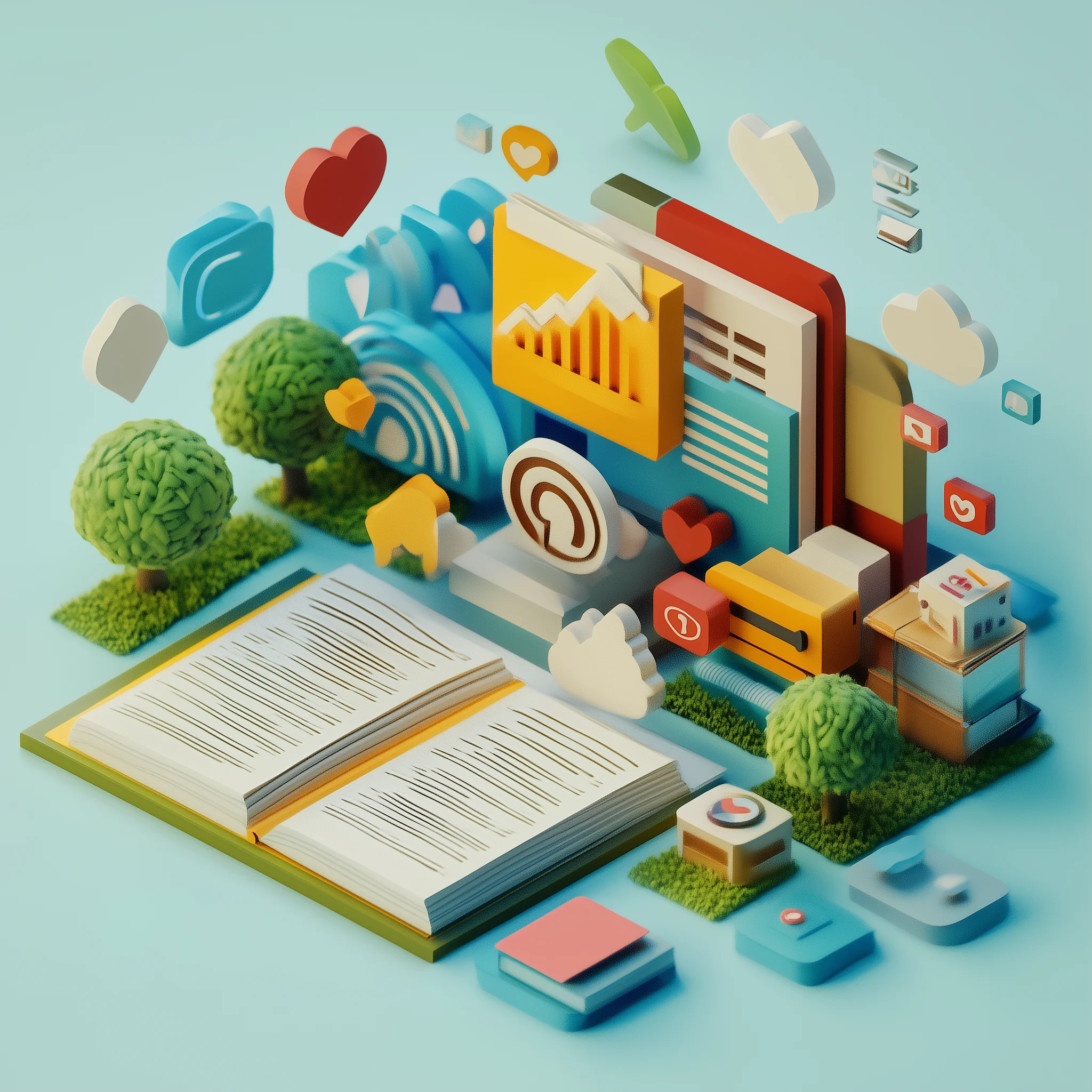Disclosure:
Some of the links on this website are affiliate links, which means that if you click on one of the links and sign up or make a purchase, we may earn a small commission at no additional cost to you. This commission helps support the maintenance and operation of this site.
We only recommend products or services that we believe will provide value to our readers. Our opinions and recommendations are based on our own research and experiences, and we strive to offer honest and unbiased content.
Please note that your support through these affiliate links is greatly appreciated, as it helps us continue to provide quality content and resources.
Thank you for your support!
Sustainable business models are approaches to business that focus on creating value while minimizing environmental impact and promoting social well-being. Unlike traditional business models that may prioritize short-term profits, sustainable models integrate long-term ecological, social, and economic considerations. These models are gaining traction as consumers, investors, and governments push for greater accountability and responsible business practices.
Here’s a detailed exploration of sustainable business models, along with key components, examples, and tools to help businesses get started.
Key Components of Sustainable Business Models
- Resource Efficiency
- Definition: Utilizing resources (such as energy, water, and raw materials) more efficiently to reduce waste and minimize costs.
- Examples:
- Implementing energy-saving technologies.
- Using water-efficient systems in manufacturing processes.
- Adopting recycling and waste reduction practices.
- Tools:
- Energy Star Portfolio Manager: Helps businesses track and manage energy consumption.
- Enablon: Software for managing environmental performance and sustainability data.
- Ecomatcher: A platform for businesses to invest in tree planting for carbon offsetting.
- Circular Economy
- Definition: Designing products and processes that allow materials to be reused, recycled, or upcycled, extending their life cycle and reducing waste.
- Examples:
- Using biodegradable or recyclable materials for packaging.
- Encouraging product returns for repair, refurbishment, or recycling (e.g., clothing brands offering trade-ins for old items).
- Developing products that can be easily disassembled for recycling.
- Tools:
- Loop: A platform helping businesses implement reusable packaging systems.
- Terracycle: A recycling company that offers recycling solutions for businesses.
- Circularity Gap Reporting Initiative: Assists companies in tracking their circularity metrics.
- Ethical Sourcing and Fair Trade
- Definition: Procuring materials and products in a way that respects workers’ rights and ensures fair wages and safe working conditions.
- Examples:
- Sourcing coffee, chocolate, or clothing from Fair Trade certified suppliers.
- Partnering with manufacturers who follow ethical labor practices.
- Engaging in local community initiatives to support fair employment.
- Tools:
- Sedex: Helps businesses manage their supply chains by providing insights into ethical sourcing practices.
- Fair Trade USA: Certifies products and suppliers to ensure ethical sourcing.
- B Corp Certification: Certifies businesses that meet high standards of social and environmental performance.
- Green Products and Services
- Definition: Creating or offering products that are environmentally friendly, non-toxic, and contribute to sustainability.
- Examples:
- Developing energy-efficient appliances and eco-friendly cleaning products.
- Offering sustainable services, such as green energy consulting or eco-friendly construction.
- Launching products made from recycled or renewable materials.
- Tools:
- EcoVadis: Provides sustainability ratings and analytics for supply chains.
- Grove Collaborative: Offers a marketplace for eco-friendly and sustainable products.
- GoodGuide: Rates products based on their environmental impact.
Types of Sustainable Business Models
- Green Products and Services
- Description: Businesses that produce eco-friendly products or provide services aimed at reducing environmental impact.
- Potential Businesses:
- Solar energy solutions and installations.
- Eco-friendly cleaning services.
- Organic food production and delivery.
- Pros: Growing demand, tax incentives, positive brand reputation.
- Cons: Initial high costs, regulatory requirements, need for constant innovation.
- Social Enterprises
- Description: Businesses that focus on solving social problems while generating profit. These enterprises reinvest a portion of their profits back into the community or social causes.
- Potential Businesses:
- Job training programs for underprivileged communities.
- Products that address health or education gaps.
- Non-profit consulting firms.
- Pros: Strong community support, increased brand loyalty, access to social investment.
- Cons: Balancing profit with social goals, managing perceptions, possible funding challenges.
- Circular Economy Businesses
- Description: Companies that prioritize waste reduction by designing products and processes that allow for reuse, recycling, and regeneration.
- Potential Businesses:
- Companies offering product leasing instead of sales (e.g., tools, clothing).
- Businesses that upcycle waste materials into new products (e.g., furniture from recycled plastic).
- Subscription services that promote the sharing economy (e.g., car-sharing, equipment rental).
- Pros: Reduced costs through efficient resource use, government incentives, long-term profitability.
- Cons: Initial setup complexity, market acceptance challenges, supply chain adjustments.
Tools and Platforms for Sustainable Business Practices
- Small Businesses:
- Ecosia: A search engine that uses ad revenue to plant trees.
- Sustainable Business Toolkit: Offers guides and resources for small businesses to adopt sustainable practices.
- Tree-Nation: Allows companies to offset carbon emissions by planting trees.
- Large Enterprises:
- SAP Sustainability Control Tower: Helps large companies track sustainability performance.
- GreenBiz Intelligence: Provides research and insights into sustainability trends.
- Enviance: Software for managing environmental, health, and safety compliance.
Key Skills for Building a Sustainable Business Model
- Sustainability Analysis
- Understand the environmental and social impacts of your business processes.
- Develop strategies to reduce waste and improve resource efficiency.
- Strategic Planning
- Create long-term sustainability goals aligned with business growth.
- Develop action plans to implement sustainable practices across all areas of the business.
- Stakeholder Engagement
- Build relationships with partners, suppliers, and communities to encourage collaboration on sustainability initiatives.
- Educate customers on the benefits of sustainable practices to build trust and loyalty.
- Impact Measurement
- Monitor, evaluate, and report the impact of sustainability initiatives.
- Use metrics and analytics tools to track progress and make data-driven improvements.
Benefits of Sustainable Business Models
- Cost Savings
- Efficient use of resources leads to reduced operational costs. For instance, adopting energy-efficient solutions can significantly lower utility bills over time.
- Improved Brand Reputation
- Consumers are increasingly favoring businesses that prioritize sustainability. Being environmentally responsible can build trust and attract a loyal customer base.
- Regulatory Compliance
- Governments around the world are enforcing stricter environmental regulations. Businesses that adopt sustainable practices can stay ahead of these regulatory changes and avoid potential fines.
- Competitive Advantage
- A strong commitment to sustainability can differentiate a business from its competitors, allowing it to tap into new markets and opportunities.
Sustainability is no longer a niche or optional approach; it’s becoming a vital part of modern business strategies. Businesses of all sizes are finding innovative ways to reduce their environmental footprint and contribute positively to society. By adopting sustainable business models, entrepreneurs can not only build profitable ventures but also make a meaningful impact on the world. Investing in the right tools, platforms, and skills can ensure that your sustainability initiatives are effective, scalable, and aligned with long-term business success.

FAQ on Sustainable Business Models
1. What is a sustainable business model?
- A sustainable business model is an approach that focuses on creating long-term value while minimizing environmental impact and promoting social well-being. It integrates economic, ecological, and social considerations into the business strategy.
2. Why are sustainable business models important?
- Sustainable business models are important because they help businesses reduce costs, improve brand reputation, ensure regulatory compliance, and build a competitive advantage. Additionally, they contribute positively to society and the environment, addressing global challenges such as climate change and resource depletion.
3. What are the key components of a sustainable business model?
- Key components include:
- Resource Efficiency: Reducing waste and utilizing resources more efficiently.
- Circular Economy: Designing products and processes for reuse, recycling, and upcycling.
- Ethical Sourcing and Fair Trade: Ensuring fair labor practices and ethical procurement.
- Green Products and Services: Developing eco-friendly products and sustainable services.
4. How does a circular economy business model work?
- A circular economy model emphasizes reducing waste by designing products and processes that allow for reuse, recycling, and regeneration. This approach extends the life cycle of materials and reduces the need for raw resources, minimizing environmental impact.
5. Can you give examples of sustainable business models?
- Green Products and Services: Offering eco-friendly products like energy-efficient appliances or organic goods.
- Social Enterprises: Businesses that focus on solving social problems while generating profits, such as job training for underserved communities.
- Circular Economy Businesses: Companies that promote product leasing, upcycling waste, or offering subscription services to encourage reuse.
6. What tools can small businesses use to adopt sustainable practices?
- Some tools include:
- Ecosia: A search engine that funds tree planting projects.
- Sustainable Business Toolkit: Offers guides and resources for small businesses to implement sustainable practices.
- Tree-Nation: Helps companies offset their carbon emissions by planting trees.
7. Are there any software solutions for larger enterprises focused on sustainability?
- Yes, there are several software solutions, including:
- SAP Sustainability Control Tower: For tracking sustainability performance.
- GreenBiz Intelligence: Provides research and insights on sustainability trends.
- Enviance: Manages environmental, health, and safety compliance.
8. What are the benefits of adopting a sustainable business model?
- Cost Savings: Reducing resource consumption can lead to lower operational costs.
- Improved Brand Reputation: Customers are more likely to support businesses with strong sustainability initiatives.
- Regulatory Compliance: Staying ahead of environmental regulations can help avoid fines.
- Competitive Advantage: Differentiates businesses from competitors and allows them to tap into new markets.
9. What skills are essential for building a sustainable business model?
- Sustainability Analysis: Understanding the environmental and social impacts of business processes.
- Strategic Planning: Developing long-term sustainability goals aligned with business growth.
- Stakeholder Engagement: Building relationships with partners, suppliers, and customers.
- Impact Measurement: Using metrics and analytics tools to monitor the effectiveness of sustainability initiatives.
10. How can businesses measure the impact of their sustainability initiatives?
- Businesses can use tools such as EcoVadis, Greenhouse Gas Protocol, and Circularity Gap Reporting Initiative to track their sustainability metrics. Monitoring energy consumption, waste reduction, and carbon emissions can help businesses assess their environmental impact.
11. What is ethical sourcing, and why is it important?
- Ethical sourcing ensures that products are procured in a way that respects workers’ rights, fair wages, and safe working conditions. It’s important because it promotes social well-being, reduces exploitation, and builds trust with consumers who care about responsible business practices.
12. How do green products contribute to sustainability?
- Green products are designed to have a minimal environmental impact. They are often energy-efficient, non-toxic, biodegradable, or made from recycled or renewable materials. Using such products can help reduce the carbon footprint and promote healthier ecosystems.
13. How can a business adopt a sustainable supply chain?
- A business can adopt a sustainable supply chain by:
- Sourcing raw materials from ethical and environmentally friendly suppliers.
- Reducing energy and water consumption in production.
- Minimizing waste and optimizing logistics to lower emissions.
- Partnering with suppliers that have sustainable practices.
14. Is there a certification for businesses that follow sustainable practices?
- Yes, businesses can seek certifications such as B Corp Certification, Fair Trade USA, and Energy Star to validate their sustainability efforts and demonstrate their commitment to ethical and eco-friendly practices.
15. How can sustainable business models lead to long-term profitability?
- Sustainable business models can lead to long-term profitability by reducing resource dependency, lowering operational costs, and enhancing brand loyalty. Businesses that invest in sustainability can also attract socially conscious investors, increase sales, and open new market opportunities.
These FAQs offer a comprehensive view of sustainable business models, providing insights into the importance, benefits, and tools for businesses seeking to adopt sustainability practices.
More on Business here.
Subscribe to our Newsletter for Posts, Updates and More.





Leave a Reply